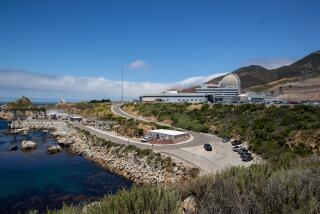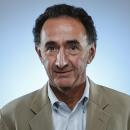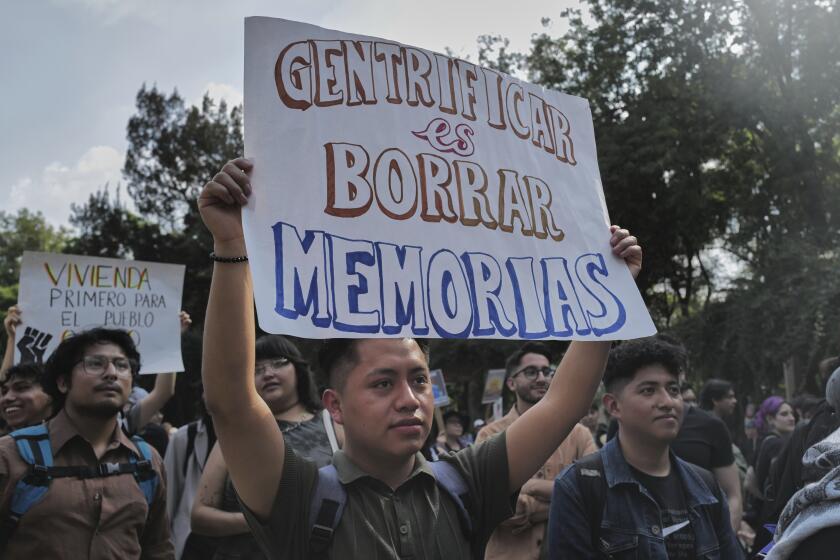Panel Calls for Cutbacks at Nuclear Lab : Weapons: Warhead design at Lawrence Livermore facility should be moved to New Mexico, national commission says. Energy secretary responds favorably to recommendation.
- Share via
WASHINGTON — Lawrence Livermore National Laboratory, the nation’s largest nuclear weapons laboratory with more than 8,000 employees, should get out of the business of designing warheads, a national commission said Wednesday.
The panel, chaired by former Motorola Chairman Robert Galvin, recommended consolidating design work for future nuclear weapons at a single location: Los Alamos National Laboratory in New Mexico, the nation’s other major weapons lab.
Energy Secretary Hazel O’Leary said Wednesday that she intends to “embrace and adopt” the vast majority of Galvin’s findings, although she made no commitments to move ahead with any specific recommendations.
The Galvin proposals received a chilly reception at Livermore, where officials are unwilling to yield their role in designing nuclear weapons. They characterized the report as just one input in deciding the lab’s future.
Livermore Director C. Bruce Tartar said in a statement that the Energy Department has its own internal post-Cold War plan, which he described as a “more comprehensive road map.” Tartar also said he expects that the Livermore lab’s future role “will turn out differently” than envisioned by Galvin.
The long-anticipated report found that the Energy Department’s network of 10 major laboratories, which are engaged in everything from nuclear bombs to biological research, are overstaffed and inefficiently managed.
The coast-to-coast research complex, the largest of its kind in the world, is costing taxpayers $6.8 billion this year. It employs about 50,000 scientists, engineers and support staff.
Although the commission released a long list of recommendations to help refocus the labs on research to benefit the U.S. economy, it stopped well short of the broad cutbacks suggested by many critics and federal budget cutters. Not a single lab would be shuttered under the plan.
O’Leary said she interprets the report to say that her agency’s lab complex is “too fat, too heavy and too costly.” She said the department is aggressively moving to cut its overall budget 10%.
O’Leary acknowledged that cutbacks and consolidation in the labs would mean broad job losses, although the department offered no estimates of how many individuals would be affected at Livermore or elsewhere.
Livermore, east of San Francisco, was founded in 1952 at the urging of physicists E. O. Lawrence and Edward Teller, widely regarded as the father of the U.S. hydrogen bomb. In testimony this week, Teller, 86, warned against a broad scaling back of the laboratory system. Closing Livermore “would have disastrous consequences to the nation,” Teller said.
Although the Galvin group did not recommend a complete closure, it said that Livermore has the greatest redundancy in the lab system. And because Livermore is credited with only four of the 11 nuclear bomb designs in the current U.S. stockpile, the group recommended consolidating design capability at Los Alamos. The United States is not known to be working on any new nuclear bombs but intends to retain a permanent capability to design and build the weapons.
The consolidation would include transferring work in nuclear material development and production to Los Alamos.
Livermore still should retain expertise in nuclear weapons and concentrate research activities on nuclear proliferation, a job it already performs, the Galvin commission recommended.
But that limited role raises potentially troubling questions about a plan to build a $1-billion national ignition facility laser at Livermore because construction of the project would further reinforce the lab’s weapons design capability, the report said.
O’Learly said she continues to support construction of the laser at Livermore, citing the lab’s expertise in lasers and the potential for cost savings by locating there.
More to Read
Sign up for Essential California
The most important California stories and recommendations in your inbox every morning.
You may occasionally receive promotional content from the Los Angeles Times.














